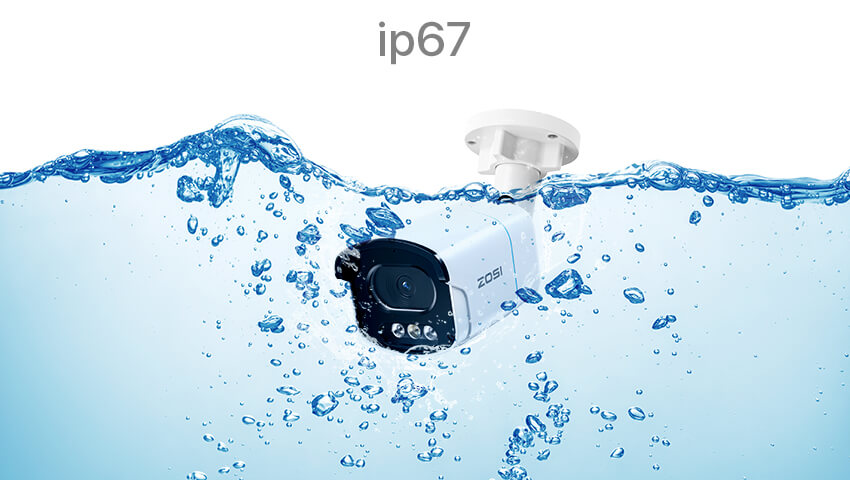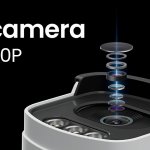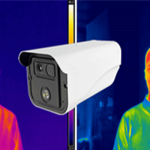In security system design, the stability and environmental adaptability of cameras directly affect the reliability of the monitoring system. For outdoor or complex environment applications, the protection rating (IP) is a key indicator. Among them, IP67-rated cameras have become representative of high-standard outdoor monitoring equipment. This article will provide an in-depth analysis from a technical perspective of the meaning of the IP67 standard, testing methods, and its implementation principles in camera structure and performance design.
Contents
I. Overview of IP Protection Rating Standards
IP protection rating is defined by the International Electrotechnical Commission standard IEC 60529 and is used to assess the ability of a device enclosure to protect against the intrusion of solid foreign objects and liquids.
The IP rating consists of two numbers:
| Symbol | Meaning | Protection Content | Rating Description
| First Number (6) | Dustproof Rating | Solid Particles | 6 indicates complete dustproof protection; dust cannot enter the enclosure. |
| Second Number (7) | Waterproof Rating | Liquid Penetration | 7 indicates that the device can be immersed in 1 meter of water for 30 minutes without affecting its function. Therefore, an IP67 camera means the device can operate stably in extreme environments with high dust, high humidity, or short-term water immersion.
II. Technical Implementation of IP67 Protection Performance
To achieve an IP67 rating, the camera design must meet stringent requirements in terms of structure, materials, sealing, and manufacturing processes.
1. Housing Structure Design
A unibody die-cast aluminum alloy housing ensures rigidity and corrosion resistance; O-rings and industrial-grade silicone waterproof gaskets are used at seams to prevent the infiltration of minute amounts of moisture;
A double-layer sealing process is used between the glass lens and the housing to prevent condensation.
2. Dustproof, Waterproof, and Ventilation Design
IP67 cameras typically integrate a waterproof and breathable membrane (GORE membrane) for:
Balancing internal air pressure to prevent moisture intake due to temperature differences;
Maintaining dustproof and waterproof performance while preventing lens fogging.
3. Interface and Cabling Protection
Utilizes waterproof RJ45 network ports or aviation interfaces, sealed with rubber sleeves;
Waterproof nuts are added to cable outlets to ensure no aging or leakage during long-term outdoor use.
III. IP67 Protection Testing Standards
To obtain IP67 certification, equipment must pass a series of rigorous tests:
1. Dustproof Test (Level 6)
Operate for 8 hours in a sealed test chamber containing fine dust (such as talcum powder);
Check for internal dust particles that may affect operation.
2. Waterproof Test (Level 7)
Completely immerse the sample in 1 meter of still water for 30 minutes;
After the test, there should be no water seepage, normal function, and no degradation in insulation performance.
Qualified IP67 cameras usually come with a protection level test report or IEC certification number, which can be used as a basis for quality acceptance in engineering projects.
IV. Significance of IP67 Protection Rating in Security Systems
The IP67 rating brings the following key performance advantages to cameras:
High environmental adaptability: Can be deployed long-term in rain, snow, sandstorms, high humidity, or coastal environments.
Reduced maintenance costs: The sealed structure reduces the failure rate caused by dust and moisture.
Improved system stability: Ensures continuous power supply and image output even in extreme weather conditions.
Supports 24/7 monitoring: Combines infrared night vision and wide dynamic range (WDR) technology to ensure 24-hour availability.
V. Typical Application Scenarios
IP67 protection-rated cameras are widely used in:
Urban road monitoring, bridges, ports, and highways;
Industrial plants, warehousing and logistics, and outdoor equipment monitoring;
Residential entrances, parking lots, and courtyards;
Special locations with high temperatures, humidity, or high dust levels (such as mining areas and food processing plants).
In these environments, the IP67 rating not only ensures the safety of the camera itself but also improves the long-term reliability of the entire monitoring system.
VI. Conclusion
The IP67 protection rating is not simply a marketing parameter, but rather the result of comprehensive optimization of structural design, sealing materials, and manufacturing processes. For surveillance systems that need to operate outdoors for extended periods, it represents a stable and durable technical standard.
Choosing cameras with genuine IP67 certification means your system will have a longer lifespan, higher operational reliability, and lower maintenance risks.





